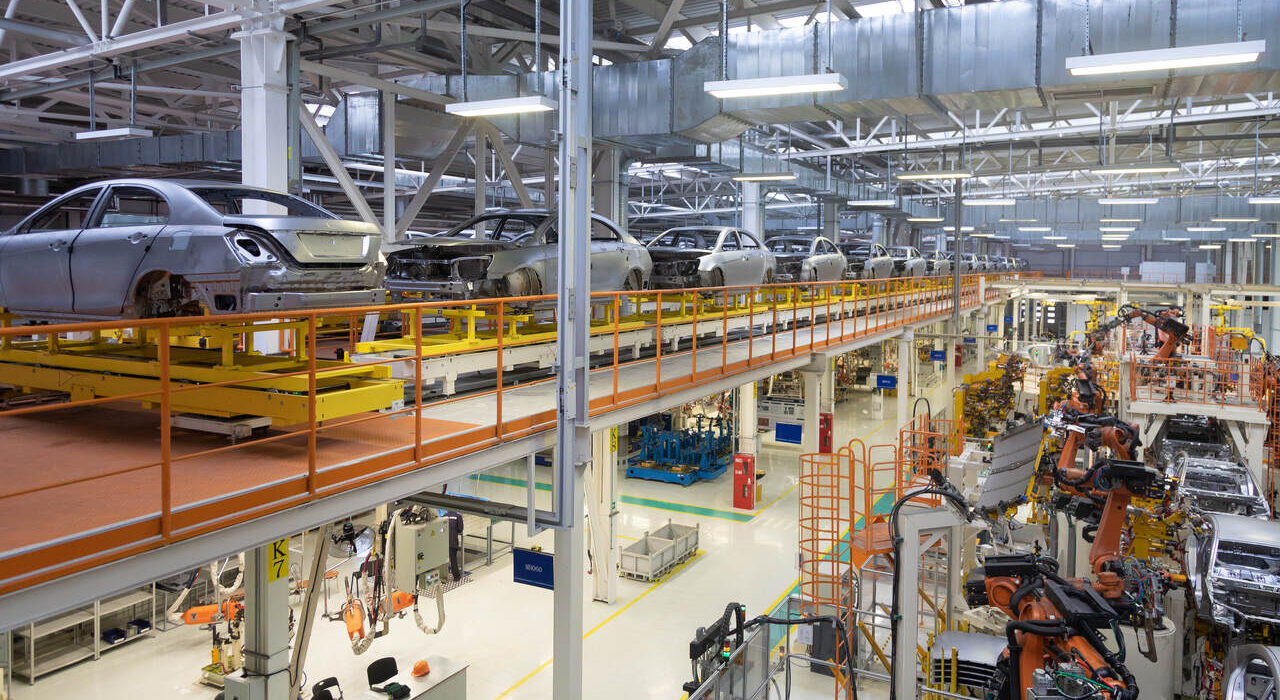The automotive industry is going green means it is trying to use natural resources for making cars and this is not just about electric cars anymore. Automakers are thinking how cars are constructed with the use of bioplastics, recycled metals, and natural fibre composites.
Ecological materials are currently in the spotlight because they are revolutionizing the design, production, and recycling of automobiles. This is not merely a fashion which will come and go. It is the future of the automotive industry and this is the combination of performance, responsibility, and innovation. This blog post will explain the role of sustainable materials play in the manufacturing of automobiles, how they assist, what kind of problems exist, and what will be future of it.
Why Switch to Sustainable Materials?
Automobiles were constructed from many years with conventional materials like steel, aluminum, and polymers which are derived from petroleum. These materials were strong and long-lasting, but they came at a high price and they used a lot of energy, produced a lot of carbon emissions, and pollute the environment. So, manufacturers are trying to implement sustainable materials which will lower the production costs, limit the pollution and enhance their brand’s green image.
In future, strict emission standards are being set by governments all over the world. Now a day’s customers are more environmental and eco-conscious. Automakers understand that producing environmentally friendly cars is not only beneficial for the environment, but also profitable for their country business.
Categories of Eco-Friendly Materials for Automobiles
These are a few eco-friendly materials which are important to the automotive revolution:
- Polymers are bioplastics which are made from renewable plants, such as soybeans, corn, or sugarcane, instead of fossil fuels. They can commonly be reused or biodegraded and they have a lower carbon footprint. Automakers use bioplastics for seat covers, dashboards, trims, and even tiny mechanical components. They keep cars sturdy and lightweight while also reducing waste.
- Compared to mining new ore, using recycled steel and aluminum saves a major amount of energy and these are perfect for automobile frames, doors, and bodies because they maintain the same standard. This is the simplest and most effective methods for making cars greener.
- In cars, glass fibres are being replaced by fibres from hemp, flax, jute, bamboo, and kenaf because they are biodegradable, renewable, and lightweight. Local and renewable resources can make automotive sustainable so, researchers at IIT Guwahati have created a bamboo-based composite that may soon be used in automobile interiors.
- Traditional paints commonly discharge volatile organic compounds (VOCs) which pollute air. Environmentally friendly paints and coatings like low-VOC paints and water-based coatings reduce these emissions which maintain durability or colour quality.
- To create new parts, automakers are reusing plastic waste from outdated vehicles, bottles, and packaging. Nowadays, recycled plastics are used in seat fabrics, bumpers, and insulation panels, which declines the need for virgin plastic and landfill waste.
Advantages of Using Sustainable Materials
There are several advantages for the environment and businesses when sustainable materials are used in the manufacture of automobiles.
- Recycled and renewable resources contribute to a decrease in waste, carbon emissions, and lower energy consumption during production of cars.
- As many sustainable materials are lighter than conventional ones so, cars that are lighter and more efficient are gasoline-powered vehicles which will use less fuel and electric vehicles (EVs) and they have longer battery life.
- Ecological friendly cars are becoming more popular as customers choose more environmentally friendly options and businesses that make investments in environmental friendly cars can gain the trust and loyalty of their customers.
- Automakers are encouraged to experiment with design, recycling, and circular economy models by sustainable materials, which opens up new possibilities for innovation and research.
- Zero-emission cars are being promoted by governments in the US, Europe, and India. Automakers can switch to the sustainable materials in automotive manufacturing, which offers multiple benefits for the planet and for companies.
Difficulties and Barriers
Despite the obvious advantages, there are still a number of obstacles to overcome before sustainability which is widely adopted.
- Due to limited production, certain materials, such as natural fibres and bioplastics, are still expensive. One of the biggest challenges is scaling them up to satisfy demand at worldwide.
- Every component used in cars must pass tests for lifespan, weather durability, and crash resistance and it takes time and money to make sure new materials fulfil those standards.
- Reliable sources of bio-based are not available. Establishing a strong green supply chain is essential.
Recycling and the Management of End-of-Life
- It can be challenge to fully reuse some composite materials so, industry needs to create some methods for effectively separate and reuse this material.
- Regulatory standards or practices of sustainable regulations across country are different and it can be sometime complicated also.
The Real-World Cases and Industry Developments
Automakers have already started using sustainable material in car industry:
- BMW’s i Vision Circular is a model vehicle that demonstrates how future automobiles can be both luxurious and environmentally responsible by using only recyclable or recycled materials.
- Bio-based plastics used by Toyota and Hyundai for interiors and trims.
- Recycled materials will be used by Volvo inside car interiors in near future instead of leather.
- Ford has experimented with rice-hull composites and soy-based foam in its seat cushions.
- In order to prevent waste materials and outdated automobiles from ending up in landfills while start-ups are developing closed-loop systems.
These examples establish how sustainable material is emerging in the automotive industries in today’s competitive world.
New Technology: Structural Battery Composites
Structural Battery Composites (SBCs) are a unique technology that is becoming more and more popular and these materials serve as the vehicle’s structural support as well as energy storage, allowing the vehicle’s body to store electrical energy.
- They increase the overall efficiency of electric vehicles, make them stronger and lighter
- They eliminate the need for separate, bulky battery packs.
- They improve overall efficiency for electric vehicles.
- SBCs technology have the potential to revolutionize EV design by combining sustainability, safety, and performance into a single potent system which is in research phase.
Future of Sustainable Materials in Modernizing Car Manufacturing
Here are some sustainable materials which are environmentally friendly materials and this will influence the upcoming generation of automobiles:
- Fully recyclable vehicles can be made which can easily be disassemble and their parts will be reused.
- Advanced bio-composites made from renewable resources that are stronger, less expensive, and lighter in weight.
- In circular manufacturing systems raw materials continuously flow back into production.
- Government will support laws, tax incentives and green certifications which encourage businesses towards environmentally innovative.
- Mass adoption are sustainable materials will become the standard, not the exception, as demand increases and costs decline.
According to recent reports, the sustainable materials market value was over $100 billion in 2024 and is predicted to double by 2035, demonstrating the magnitude of this revolution.
How You Can Help in revolutionizing Sustainable Materials
You can contribute as a student, designer, or auto enthusiast:
- By getting more knowledge about automotive materials and sustainable design.
- By encourage companies that put an effort on eco-friendly production.
- By opting for hybrid or electric cars with recycled parts.
- By promoting laws that support circular economy principles and green technology.
Every decision matters and awareness is the first step toward sustainability.
Final Thoughts
Sustainable materials in automobiles are being redefined. They are protecting the planet by making cars lighter, cleaner, and more efficient.
By using bioplastics, bamboo composites, recycled metals, and structural battery composites, the automotive industry is beginning a new era where innovation and accountability coexist. The future of sustainable material is clear through sustainability, innovation, and deliberate advancement, which are important in auto manufacturing.

